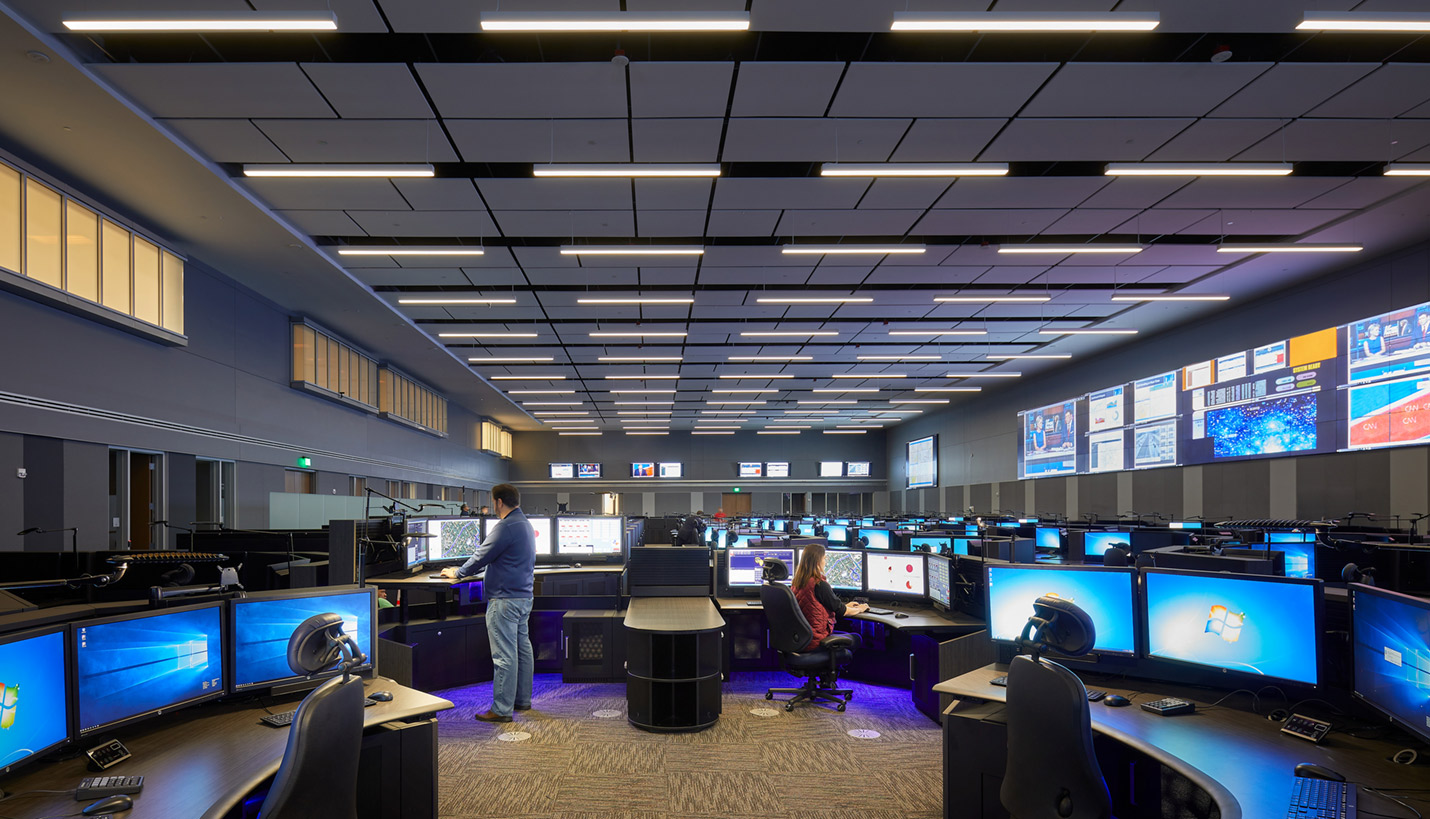

Emergent Design
Most people will never have to call 911, but we all take comfort in knowing that if we do call, help will be on the way. The 911 service is vital, so the facilities that support it must be designed to meet the unique needs of emergency response personnel.
The Quarry Run Regional Operations Center recently completed near San Antonio, Texas, shows what a 911 call center can be. The center supports the county sheriff, municipal police and fire departments, and surrounding counties with an emergency operations center, two data centers and a 13,878-square-foot public safety answering point (PSAP) facility with 100 consoles.
Operational Needs Include Wellness
Occupant experience is vital to operational success. Responding to 911 calls is a stressful job with a high turnover rate, so the design team focused on the workplace experience and how to make it better.

Open communication among the client, design, and construction teams established productive relationships based on trust and respect. The same team, including the Whiting-Turner Contracting Company, stayed with the project from beginning to end. This consistency helped foster a high-performance team with a rapport comfortable enough to communicate effectively and disagree respectfully.
Although it took time to cultivate the dynamic, once it was in place, the project ran smoothly through its successful completion, resulting in a state-of-the-art facility that exceeds the expectations of its occupants and the community it serves.
Mission Critical
At Quarry Run, technology and resiliency are at the heart of its mission. The rapid pace of technological advancements is a challenge for any project that has a deep IT infrastructure, but for a 911 center, there are stringent requirements for resiliency in the face of natural disasters.
The support provided by these call centers is critical to the communities they serve, and they can’t fail. The design needed to accommodate the most cutting-edge technology available while also anticipating what future developments will be and planning space for them.

Because the PSAP and emergency operations center is at the heart of rescue efforts during major events, the facility must be built to withstand the effects of natural and man-made disasters. The building is designed to the Uptime Institute’s Tier III standards, which require a rigorous mechanical, electrical, and plumbing (MEP) infrastructure to support long-term viability.
The facility relies on 2N redundancy, which means all critical elements are doubled. Critical power is sourced from two separate distribution substations. Critical power requirements comply with National Electrical Code Section 708, defined nationwide by Critical Operations Power Systems for facilities whose operation is considered critical to public safety or national security.
Mechanically, the building itself responds to component faults or failures. Electrical systems are equipped to automatically respond to a fault or failure in any component or distribution path without loss of critical load. The chilled-water plant and distribution are designed on a looped system, providing the ability to maintain, repair, or replace any component in the system without impacting critical services.
The facility also benefits from two data centers designed in accordance with Uptime Institute’s Tier III standards. The structure is designed to withstand wind and ballistic attacks equivalent to Enhanced Fujita Scale EF3 tornado forces. Finally, the MEP
courtyard features fully redundant systems protected by a breathable, hardened roof that protects critical electrical and mechanical components to EF3 levels.
Making 911 More Effective
Upgrading or building an emergency response center is no small task. Multiple specialized factors have to be taken into consideration and addressed throughout each phase of the project. Addressing these challenges with insightful solutions helps create a state-of-the-art emergency communications center—and ensures that when an emergency does occur, the 911 safety net is effective.

This editorial was written by Michael Mace, AIA and Freddy Padilla, PE, for Sheriff & Deputy Magazine, September / October 2019 issue. To view a .pdf of the article, click here.
10/02/2019
People
Related Posts
- The Essential Steps for Bringing a Facility Project to Market Quickly
- Washington County Picks Page for 911 Center Design
- BD+C Magazine: Data Centers Keep Cool While Staying Hot
- Critical Power: Hospitals and Data Centers
- Cover Story: 'Metro Security' in Security Today
- Designed for Survivability
- Winner: Data Center Design Team of the Year








